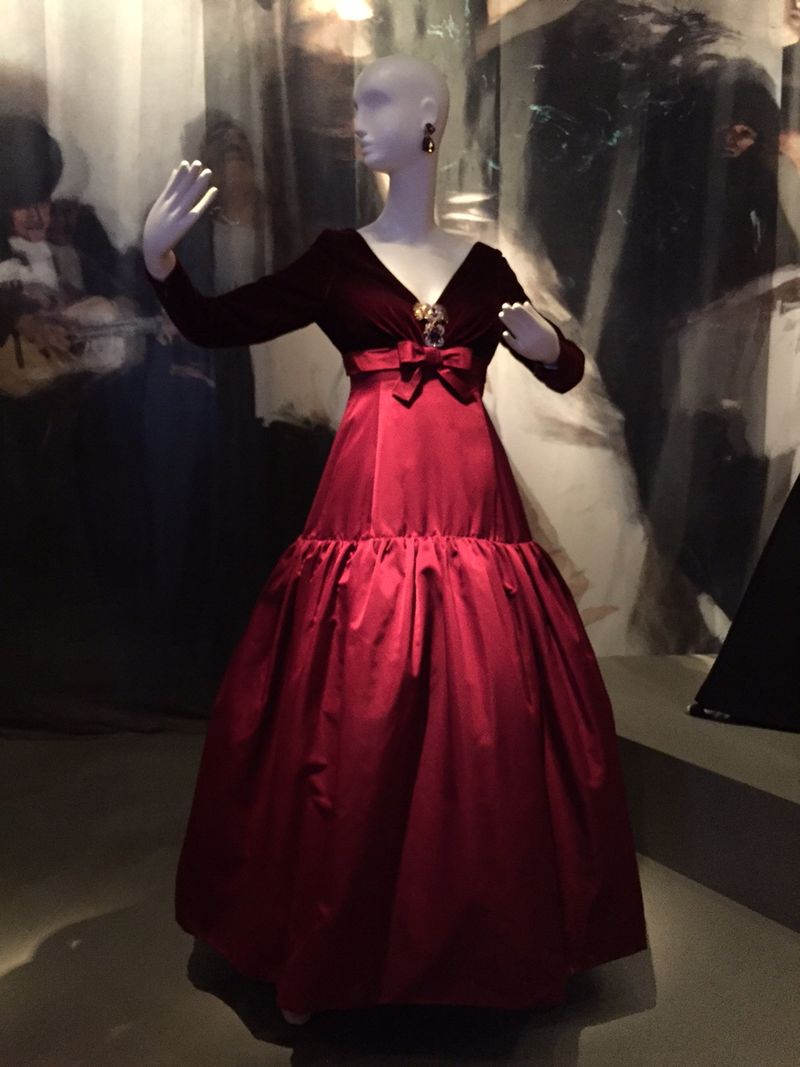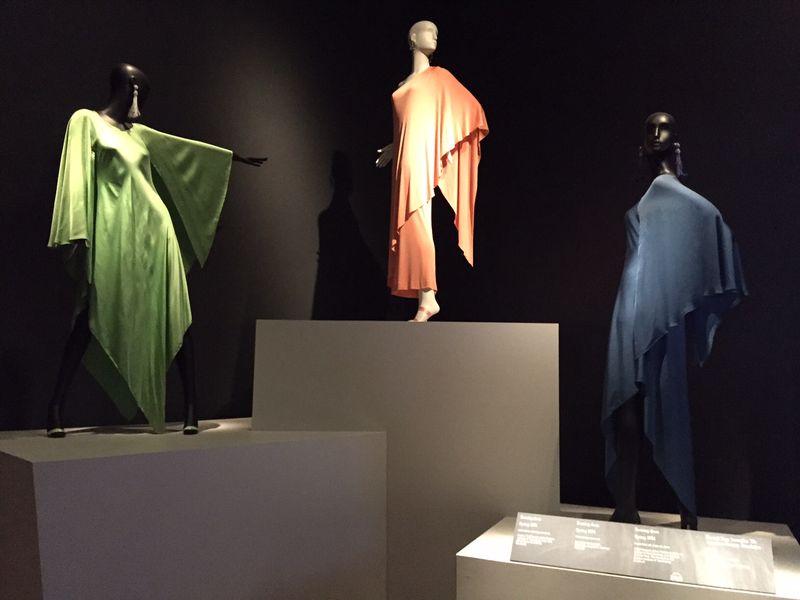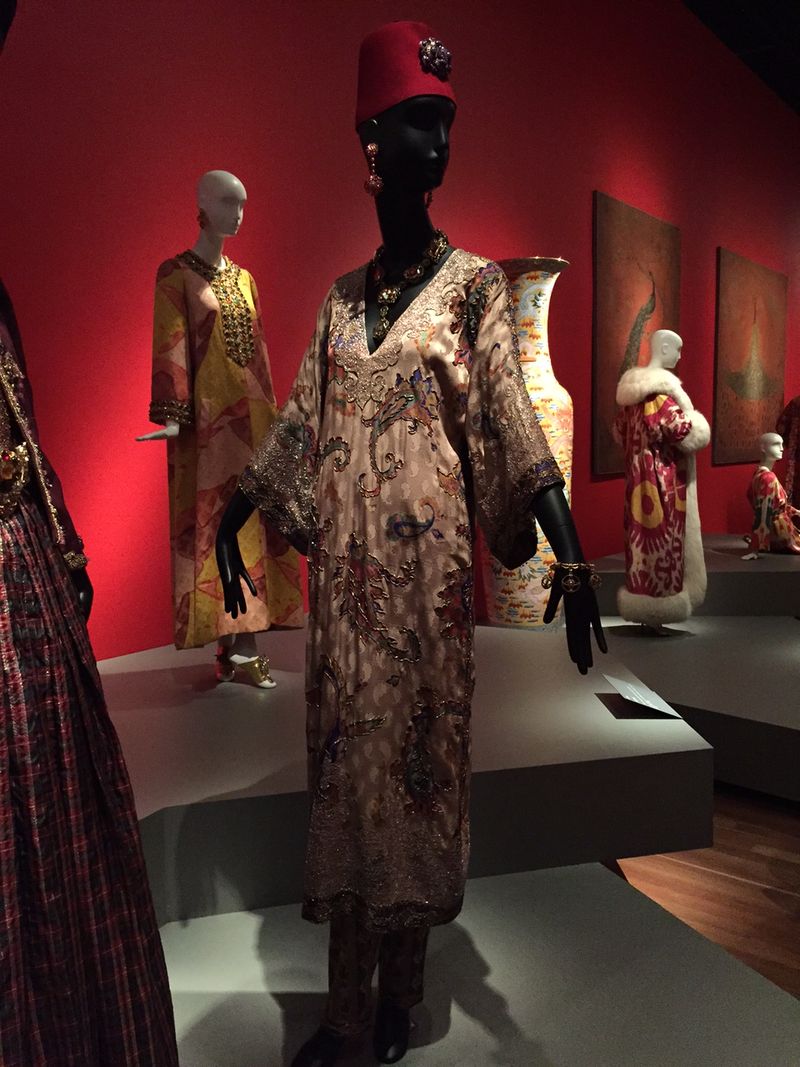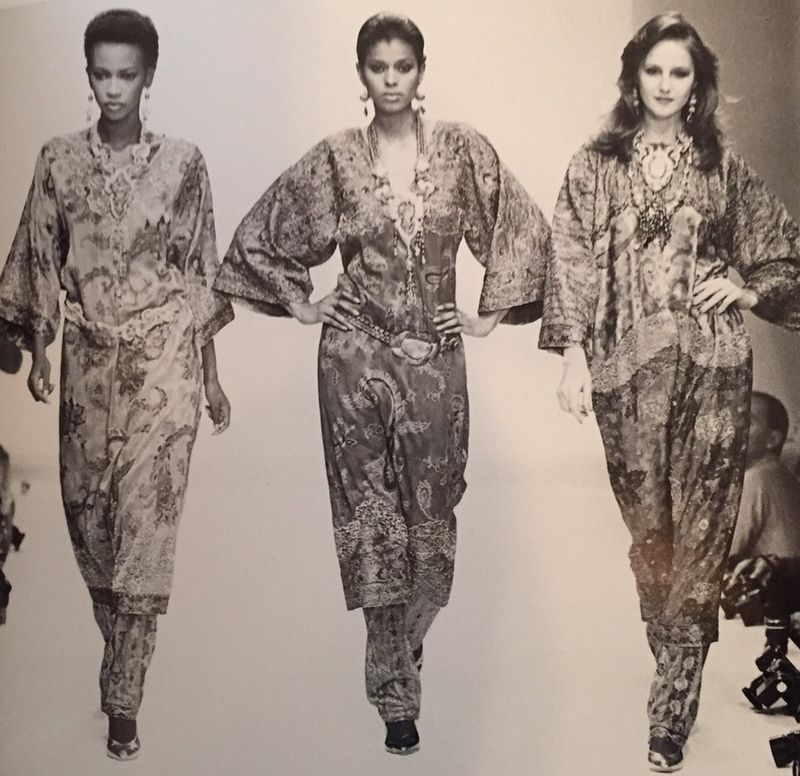Oscar de la Renta
Sophisticated. Powerful. Feminine. Above all, glamorous. When a woman dons an Oscar de la Renta creation, she exudes worldliness and elegance. There is a reason his clothes were embraced by First Ladies, society matrons, and millennial supermodels alike: de la Renta's designs made women feel confident.
The Dominican-born designer truly loved helping women look and feel lovely in their own skin. He told Vogue, “Any girl from any walk of life dreams of that special dress, and I try to make that dream a reality for her.”[1] Though he is celebrated for his high-voltage glamour – ruffles, sequins, lace, and embroidery – his tailored suits and billowing caftans are equally stylish. The designer is truly a sum of his parts; his clothes reflect a youth spent in Santo Domingo, an infatuation with Spanish culture, respect for Parisian haute couture, and the chic simplicity of American fashion.
The design community was bereft when de la Renta passed away from cancer in 2014, leaving behind a legacy of over fifty years in the industry. Now, fashion aficionados can celebrate the designer and follow his journey from the Caribbean to New York’s Seventh Avenue at the de Young Museum’s Oscar de la Renta retrospective, curated by former Vogue editor André Leon Talley. The FIDM Museum was proud to lend objects to this comprehensive exhibition (in case you missed it, you can read Curator Kevin Jones’ account of installing the pieces in San Francisco!). The exhibition is divided into sections that reflect de la Renta’s great loves and design influences – from his grand gardens to his fascination with other cultures. The FIDM Museum's ensembles appear in three separate rooms of the exhibition; they are snapshots of his long and robust career.
 Evening Gown, Oscar de la Renta
Evening Gown, Oscar de la Renta
Fall/Winter 1992-1993
Gift of Mrs. Clarissa Dyer
2003.794.22
De la Renta showed artistic inclinations as a young boy in the Dominican Republic, where he was born in 1932. At the age of 19, he convinced his parents to send him to Madrid to study painting at the Academy of San Fernando. He fully embraced his time in Spain, befriending artists, attending bullfights, and watching performances by the world’s foremost flamenco dancers. Though he did not set out for a career in fashion, de la Renta used his artistic skill as an illustrator for newspapers, magazines, and design houses. These connections led to an apprenticeship at Balenciaga’s Madrid couture house, where his imaginative illustrations transitioned into functioning design sketches. De la Renta spent ten years in Spain before accepting a position with Antonio del Castillo, lead designer at Lanvin in Paris. Throughout his career, Spain remained a constant source of inspiration: the dramatic ruffles of a flamenco skirt, the brilliant gold embroidery of a matador’s suit, the black lace of a mantilla. The FIDM Museum’s Fall/Winter 1992-93 evening gown embodies de la Renta’s Spanish meditations with its flounced silk skirt and velvet bodice – the color of a full-bodied Rioja.
 Far Right: Evening Gown, Oscar de la Renta
Far Right: Evening Gown, Oscar de la Renta
Spring/Summer 1974
FIDM Museum, 97.291.18
After three years in Paris, de la Renta sought to establish his name in the burgeoning American ready-to-wear market. He joined Elizabeth Arden as lead designer in 1963, then moved to Jane Derby, where his name was included on the label as “Oscar de la Renta for Jane Derby.” Derby passed away one year into their partnership, and the company’s name became simply “Oscar de la Renta” in 1966. The designer was able to tap into the zeitgeist of what contemporary women wanted to wear; his early collections combined luxury with the ease of sportswear. In 1973, de la Renta was named one of the designers to participate in the legendary Battle of Versailles, a charity fashion show that pitted five French couture houses against five American ready-to-wear designers to raise restoration funds for the palace. Though considered underdogs in the competition, the fresh, modern, and optimistic American presentation completely won over the audience. De la Renta’s models walked last in the show, floating across the stage in silk bias-cut gowns in a rainbow of tropical colors. The sky blue version above is now part of the FIDM Museum Collection.
 Hostess Pajamas, Oscar de la Renta
Hostess Pajamas, Oscar de la Renta
Fall 1982
FIDM Museum, 97.291.17AB
 Fall 1982 runway models: Oscar de la Renta archive, Oscar de la Renta exhibition catalog, page 161.
Fall 1982 runway models: Oscar de la Renta archive, Oscar de la Renta exhibition catalog, page 161.
Like many designers, de la Renta found inspiration in the exotic. He studied the cultures of Asia, Africa, and the Middle East, and frequently based collections on these regions. As the couture designer for Balmain from 1993 – 2002, he could indulge his Russian folklore fantasies of fur, silk, and embroidery at the highest level. For his ready-to-wear collections, de la Renta focused on simple silhouettes made of exquisite materials, such as hand-painted silks and woven ikats. His talent was combining the beauty of cultural dress with the practicality of American sportswear, as seen in our Museum's silk paisley embroidered hostess pajamas.
De la Renta once said, "When people recognize your clothes and know what you stand for -- it takes a very long time." [2] Over the course of five decades designing in America, he achieved a signature "Oscar" look and attitude, and infused this into the DNA of his label. Now, the brand's Creative Director Peter Copping, appointed just weeks before de la Renta's death in October 2014, continues that legacy. Learn more about Oscar de la Renta's remarkable career at the de Young Museum's exhibition, open until May 30.
[1] Chloe Malle, "Amal Alamuddin's Wedding Dress: Behind the Scenes at Her Final Fitting with Oscar de la Renta," Vogue.com, September 30, 2014. http://www.vogue.com/2041281/amal-alamuddin-wedding-dress-oscar-de-la-renta/
[2] Bridget Foley, "Forever Young." WWD: Women's Wear Daily 189, no. 125 (June 14, 2005): 7-10. Business Source Corporate Plus, EBSCOhost (accessed April 28, 2016).
References:
2014. "Oscar De La Renta: An American Master." WWD: Women's Wear Daily 208, no. 84: 4-1. Business Source Corporate Plus, EBSCOhost (accessed April 28, 2016).
Friedman, Arthur. "History Lesson." WWD: Women's Wear Daily 189, no. 125 (June 14, 2005): 4-31. Business Source Corporate Plus, EBSCOhost (accessed April 28, 2016).
Friedman, Vanessa. "Oscar de la Renta Names Peter Copping Creative Director." The New York Times, October 13, 2014. http://www.nytimes.com/2014/10/13/fashion/oscar-de-la-renta-names-peter-copping-as-creative-director.html?_r=0
Park, Jennifer, Molly Sorkin, and André Leon Talley. Oscar de la Renta. New York: Prestel, 2016.
Stanfill, Francesca. 2005. "Oscar de la Renta." Town & Country 159, no. 5303: 110. MasterFILE Premier, EBSCOhost (accessed April 28, 2016).